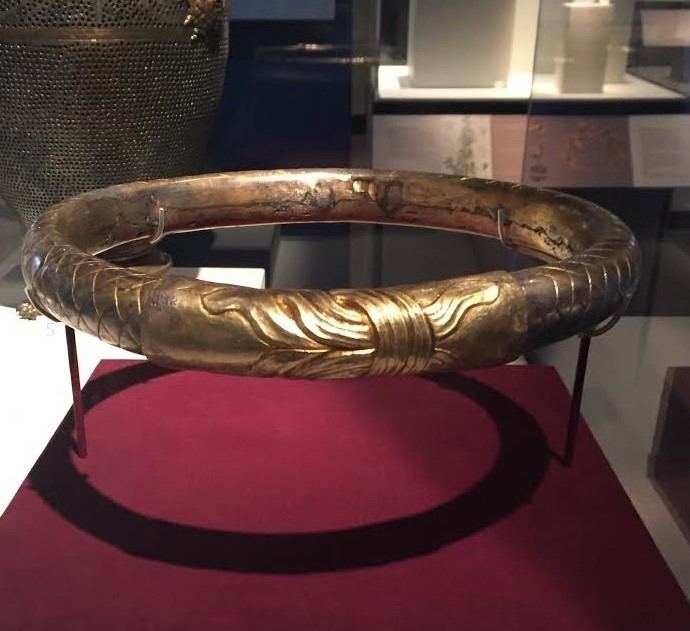 | ||
The silver and gold diadem from the tomb of Philip II is part of a traveling exhibit called “The Greeks: From Agamemnon to Alexander the Great” that features an exclusive look at Ancient Greece from its early beginnings to Alexander the Great. The artifacts in the exhibition come from 21 different Greek museums, which have let their treasures go on a two-year tour, partly in hopes of reviving a fading tourism industry.
Contents
The exhibit is co-presented in Chicago by The Field Museum and the National Hellenic Museum, and made possible by the generous contribution of The John P. Calamos Foundation and John P. Calamos Sr., Chairman of the Board of Trustees of the National Hellenic Museum. The exhibition was developed by Hellenic Republic Ministry of Culture and Sports, The Field Museum, National Geographic, Pointe-A-Calerria Montreal Archaeology and History Complex, and the Canadian Museum of History.
After the exhibition in Chicago, it will move to the National Geographic Museum in Washington, D. C. where it will close on October 9, 2016.
Object history
The silver and gold that was used to make King Philip II’s diadem would have originally been mined, processed, and then shipped to a jeweler or expert artisan. During the first millennium B.C. the region around the Balkans and Greece was famed for its precious metals. During this period, most objects were cast in a lost wax process. The lost wax process involves creating a mold with an object made out of wax, the object being an identical rendering of what the finished product should look like. Once the wax is formed it is incased in clay and then baked. While baking, the wax will melt leaving the artisan with a mold. With a completed mold the artisan would be able to fill it with the metals they wished to use. The gilding process that most likely would have been used on this diadem would have involved gold leaf being burnished to the silver. The adhesion of gold with the use of heat helps promote interdiffusion with the underlying metals which usually consist silver or copper.
While examining the diadem the most notable feature is the Herakles knot located on the front imitating a cloth headband. The knot is a reminder that the Macedonian king was a religious leader and direct descendant of the Greek hero and his father Zeus, king of the gods. On each side of the Herakles knot the metal makes a weave like pattern, continuing the cloth headband imagery. While it is apparent that age has affected some of the gold leaf surrounding the diadem, it amazingly still retains a majority of the gold. While the current diameter is 25 cm, the diadem was made to be adjustable with the two ends that fit into a smaller section in the back.
